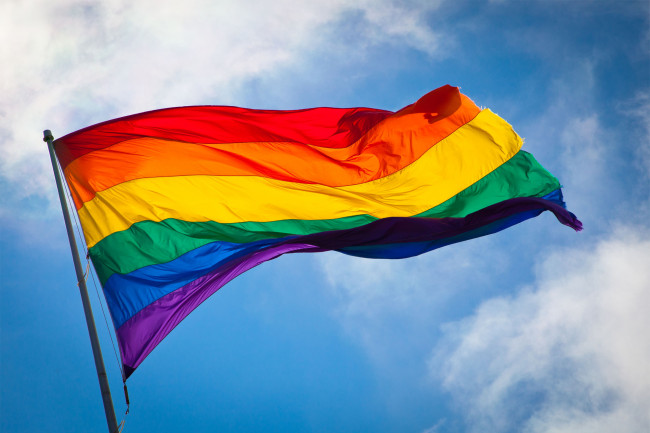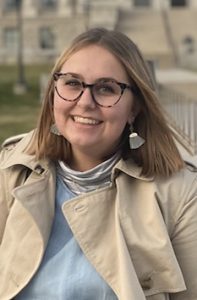Kincart: Standing with Queer Students at BYU
March 17, 2021
On March 4, 2021, rows of rainbow colors illuminated the “Y” above Brigham Young University. A group of students hiked to the “Y” and held LED lights from 8 to 9 P.M. This event concluded “Rainbow Day,” a campus event where students wore rainbow colors to show support for the queer community at BYU. Color the Campus, an unofficial BYU student group, sponsored this event to mark the anniversary of the letter clarifying BYU’s stance on “same-sex romantic behavior.” Last year, this letter led to protesting on campus and at the church office building. BYU’s handling of the Honor Code changes and their recent response to the rainbow “Y” were disheartening, to say the least. We must insist that they do better — but as students at the University of Utah, we also need to be better allies.
Bradley Talbot, the organizer of “Rainbow Day,” described feeling confused and frustrated with the Honor Code changes last spring. “We felt BYU wasn’t prioritizing getting the information to us… [they] didn’t prioritize our feelings,” he said. BYU has no excuse for the “miscommunications” surrounding the Honor Code changes last year. They are responsible for endangering students who felt comfortable embracing their sexuality during the removal. Even though the university continuously disappoints queer students, these students continue to advocate for positive change — and in a loving manner.
The purpose of “Rainbow Day” was to “[show] love and support LGBTQ+ students and faculty at all CES schools, creating a space that is both faith-inspiring and queer-affirming.” This event didn’t call for change or act as a protest, simply an act of love. Talbot “was blown away by all the support,” as he didn’t expect so many people to participate.
BYU did not authorize the lighting of the Y tonight.
— BYU (@BYU) March 5, 2021
BYU was quick to denounce the rainbow-colored “Y,” on Twitter. But, the BYU Police Lt. Jeff Long responded that “no crime was committed,” explaining that flashlights don’t qualify as vandalism. Lindsey Reese, a BYU student, thought BYU’s comment was still “in bad taste.” She would have preferred a response like, “although we didn’t authorize it, we still support the students.” A response of that kind doesn’t mean changing the Honor Code or even supporting LGBTQ+ rights, it simply shows inclusion. Once again, BYU had a chance to affirm and support their queer students, yet they chose disrespect.
13% of BYU students are LGBTQ+ and these students are more than two times as suicidal as their peers. However, feelings of love and acceptance on campus can improve this saddening statistic. Even if the number of queer students at BYU was smaller, the university’s actions would still be wrong. On a university level, Talbot hopes to see the Understanding Sexuality, Gender and Allyship group become a university-sponsored club and to see universal faculty training regarding microaggressions, bias and stereotypes faced by the queer community. Nonetheless, if we can’t count on the school to make changes, students need to lead efforts to make the campus more inclusive. Reese emphasized the importance of work done by allies since she finds most of the work advancing LGBTQ+ rights at BYU is done by “BYU students who have a lot to lose.” Allies are crucial to these efforts as they are not targeted by the Honor Code.
But, there’s work that University of Utah students need to be doing too. Kate Forth, a first-year student at the U, is passionate about advancing LBGTQ+ rights at BYU and in the Church. She was “ecstatic” and “proud” to see the rainbow “Y.” For all of us at the U who share that sentiment with Forth, we have work to do. Talbot encouraged everyone to listen to queer voices — especially those that are underrepresented. Listening to transgender individuals, BIPOC and disabled queer students is crucial to advancing representation. Talbot stressed the importance of conversation in prompting change.
Mark your calendar for #UofU Pride Week: March 29 – April 3!
🏳️🌈 https://t.co/uTC0rvY65O pic.twitter.com/KkOaJ1Owsw
— University of Utah (@UUtah) March 5, 2021
As U students, we can engage in these conversations but most importantly, we can listen. Reese doesn’t think we will see real change at BYU until students from other schools and the general public start to help with inclusion efforts. Students at the U can attend protests and amplify the voices of advocates. We have so much less to lose than the queer students at BYU, so let’s use our privilege for good.
The bravery of those who lit the “Y” should be celebrated. They are spreading messages of love and acceptance to queer students. This message is especially impactful to future queer students and those feeling ashamed or uncomfortable with their sexuality. The rainbow “Y” demonstrated that queer students have a place at BYU, whether or not the university likes it. Let’s stand in solidarity with the LGBTQ+ community at BYU and continue to advocate for inclusive change on campus.








